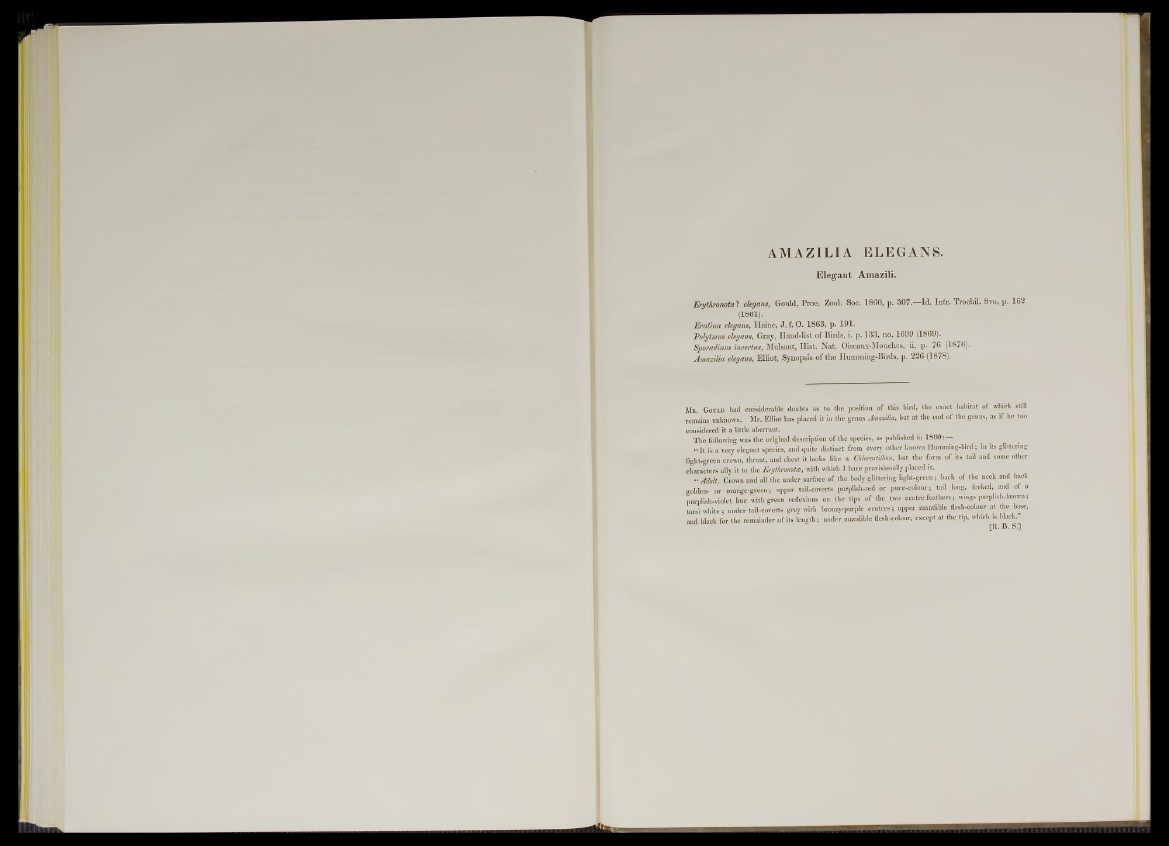
AMAZILIA ELEGANS.
Elegant Amazili.
Erythronota ? elegans, Gould, Proc. Zool. Soc. I 8 6 0 , p. 3 0 7 .— Id. Intr. Trochil. 8vo, p. 1 6 2
(1861).
lir a i ina elegans, H ein e , J. f. O. 1 8 6 3 , p. 1 9 1 .
Polytmus elegans, Gray, Hand-list o f Birds, i. p. 1 3 3 , no. 1 6 9 9 (1869).
Spmadinus incertus, Mulsant, H ist. N a t. Oiseaux-Mouches, ii. p. 7 6 (1876).
Am a zilia elegans, Ellio t, Synopsis o f th e Humming-Birds, p. 2 2 6 (1878).
Mr. G ould had considerable doubts as to the position o f this bird, the exact habitat of which still
remains unknown. Mr. Elliot has placed it in the genus Amazilia, but at the end of the genus, as if he too
considered it a little aberrant.
The following was the original description o f the species, as published in 1860:—
«• Jt is a very elegant species, and quite distinct from every other known Humming-bird; in its glittering
light-green crown, throat, and chest it looks like a CMoroslillon, but the form o f its tail and some other
characters ally it to the Erythromtai, with which I have provisionally placed it.
“ Adult. Crown and all the under surface o f the body glittering light-green ; back of the neck and back
golden- or orange-green; upper tail-coverts purplish-red or pnce-colonr; tad long, forked, and of a
purplish-violet hue with green reflexions on the tips o f the two centre feathers; wings purplish-brown;
tarsi white; nnder tail-coverts grey with bronzy-purple centres; upper mandible flesh-colonr at the base,
and black for the remainder o f its length; under mandible flesh-colour, except at the tip, which ts Mack.^